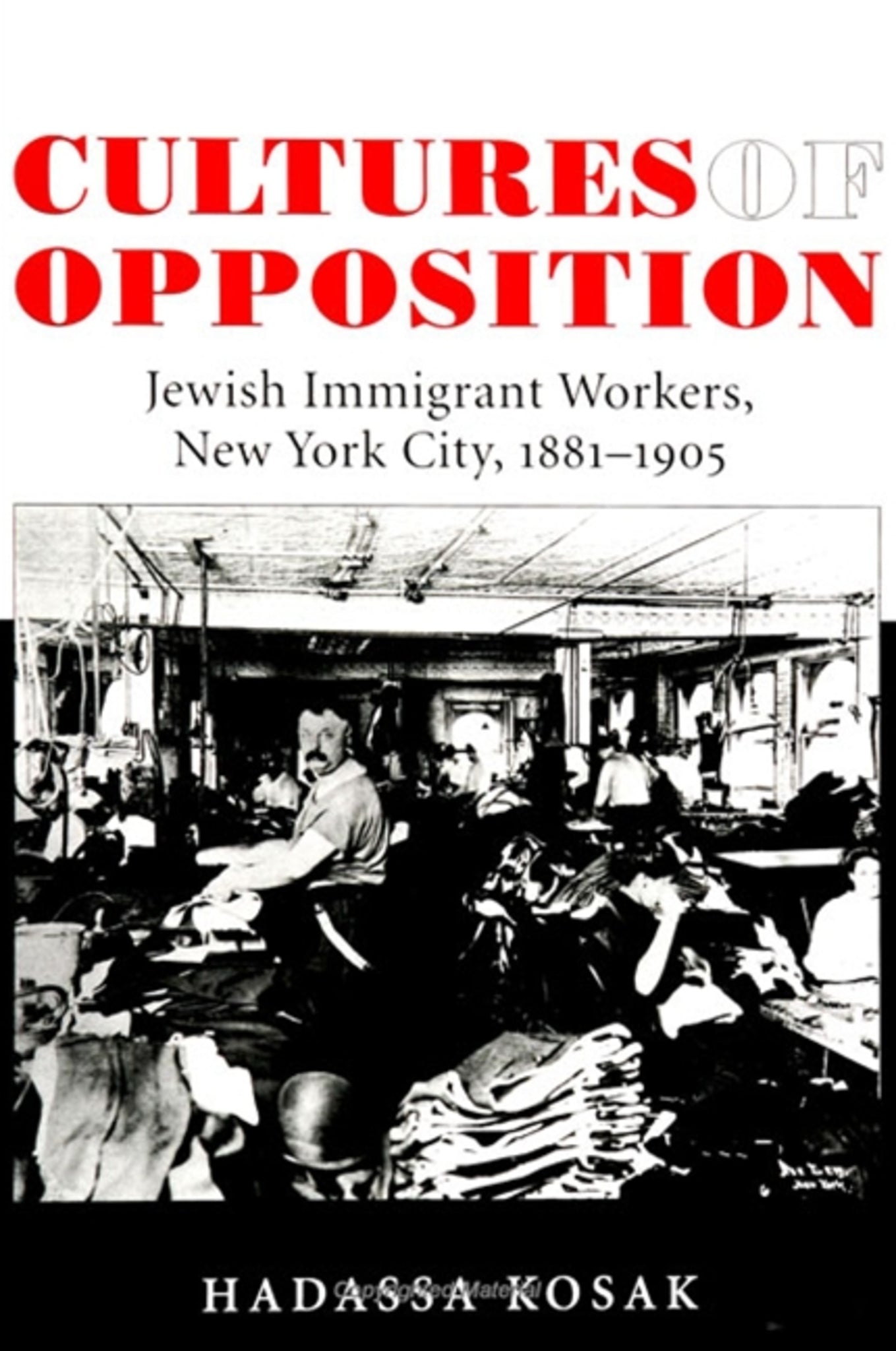We're sorry. An error has occurred
Please cancel or retry.
Cultures of Opposition

Some error occured while loading the Quick View. Please close the Quick View and try reloading the page.
Couldn't load pickup availability
- Format:
-
22 June 2000

Looks at the forging of a new Jewish political culture at the turn of the century.
2001 CHOICE Outstanding Academic Title
This work provides a reinterpretation of the origins of Jewish working-class oppositional culture in the United States. It tells how this culture was characterized by public practices such as strikes, attacks on scabs and police, rent strikes, consumer boycotts, and street parades. The participants in this social unrest ultimately forged an unmistakably new Jewish political culture informed by concepts of social justice, community solidarity and effective community-wide political participation. Enhancing Kosak's fascinating narrative are eleven period photographs.


"…an impressively researched and thoughtful book … Kosak is able to bring to the forefront the larger context in which Jewish immigrants made a place for themselves in New York City." — Journal of American Ethnic History
"Hadassa Kosak's theoretically sophisticated study of the political culture of early East European Jewish immigrants to New York is both interesting and valuable … Kosak makes particularly good use of newspapers published during the period with which she is concerned, and of unpublished, underutilized, autobiographies and interviews … her work deserves to be read and applauded." — Jewish Culture and History
"A fascinating story of artisanal Jewish people as they make the journey from the Pale of Settlement to New York's Lower East Side at the end of the nineteenth century. The source material is vibrant and alive with meaning. The analysis of the relations between artisans and the official keepers of the Jewish tradition is thoughtful and clear. The voices and the events she chronicles make this history real and readable." — Elizabeth Ewen, author of Immigrant Women in the Land of Dollars: Life and Culture on the Lower East Side, 1890–1925
List of Illustrations
Acknowledgments
Introduction
Political Culture and Community: The Historical Perspective
Cultural Strategies and Political Culture: The Sociological Perspective
The Ethnic Identity Perspective
Synthesis and Narrative: Jewish Immigrants, 1881 to 1905
Chapter One
Jewish Immigrants to the United States, 1881 to 1905: The Decline of the Old Communities
The Emigrants
Jewish Citizenship in Action
The Decline of Traditional Communities
The Impetus to Emigrate
Chapter Two
Conflicted Cultures: West and East European Jews
A Prologue: The Brody Episode
Settlement
Official Philanthropy and Communal Networks
Self-Help Networks and the Making of Social Solidarity
Chapter Three
Jewish Immigrants and the New York Clothing Industry
Garmentmaking: From Craft to Industry
Routes of Entry into the Garment Industry
Earnings and Work Hours
Chapter Four
Making a Home and Earning a Living on the Lower East Side
Demography and Economy
Self-Help and Social Organization
German Jews and the Immigrant Community: Geography, Economy, and Ideology
The Origins of Jewish Labor Organizations
Chapter Five
Themes of Collective Action
The Culture of Collective Action
Interpretations of Labor Unrest
Struggles for Control of the Workplace
Struggles for Closed Shop and against Scabs
Struggles against Sweatshops and the Contracting System
Struggles against the Task System
Chapter Six
The Politics of Morality: Jewish Workers and the Ethnic Community
Agencies of Cultural Transmission
Appropriating the Power of the Law
The Jewish Community and Established Justice
Community as an Economic and Social Weapon
Conclusion
Notes
Index



